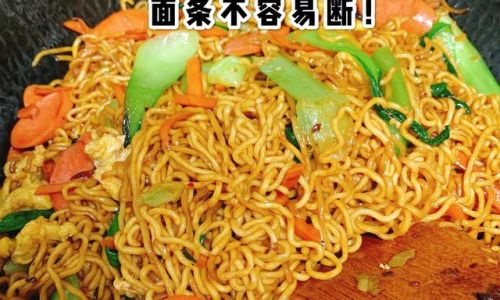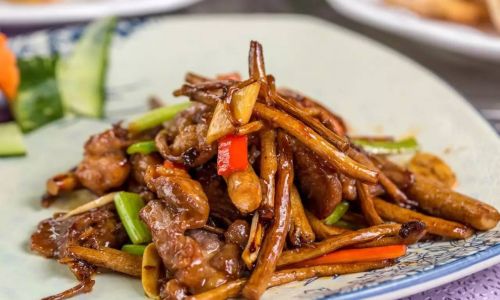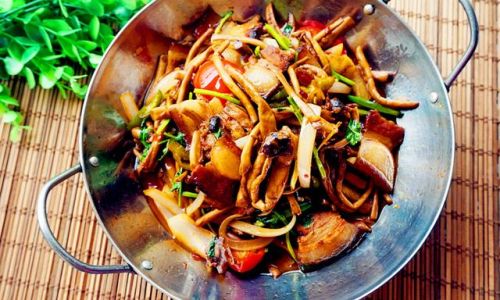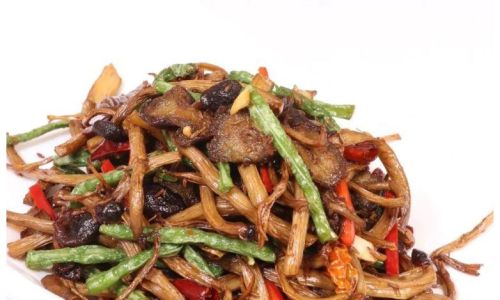Table of content
Instant noodles, often dismissed as a quick fix for hungry students or busy professionals, have evolved far beyond their humble origins. Today, they are a canvas for culinary creativity, and one of the most beloved transformations of this pantry staple is the stir-fried instant noodle dish. Combining the convenience of packaged ramen with the vibrant flavors of Asian street food, stir-fried noodles offer a balance of texture, aroma, and taste that can rival restaurant-quality meals. This article will guide you through the intricacies of crafting the perfect stir-fried instant noodles, from selecting the right ingredients to mastering the cooking technique. Whether you’re a novice cook or a seasoned home chef, this guide will equip you with the knowledge to elevate your instant noodle game to new heights.
The Foundations: Understanding Stir-Fried Noodles
Stir-frying is a cooking technique rooted in Chinese cuisine, characterized by high heat, quick cooking, and constant stirring. When applied to instant noodles, this method transforms their soft, uniform texture into something crispier, chewier, and far more satisfying. The key lies in balancing the noodles’ pre-cooked nature with fresh ingredients, aromatic sauces, and a medley of vegetables or proteins. Unlike boiling, which can leave noodles soggy, stir-frying caramelizes the edges and infuses them with smoky, wok-hei flavors—a term describing the breath of the wok, that elusive essence of char and sizzle that defines authentic stir-fries.

Ingredients: Beyond the Packaged Flavor Packet
While instant noodles come with their own seasoning, the true magic of stir-fried noodles lies in customization. Here’s a breakdown of essential and optional ingredients to create a dish that’s both flavorful and adaptable to dietary preferences:
-
Noodles:
- Opt for wheat-based instant noodles (e.g., ramen, chow mein, or udon-style). Avoid curly or overly thin varieties, as they may clump during stir-frying.
- For a healthier twist, use whole-grain or low-sodium options.
-
Vegetables:
- Essentials: Onions, garlic, bell peppers, carrots, and cabbage provide crunch and sweetness.
- Add-Ons: Mushrooms (shiitake or button), baby corn, snap peas, or spinach add depth.
- Quick Tips: Pre-slice veggies into thin, uniform strips to ensure even cooking.
-
Proteins:
- Meat: Thinly sliced chicken, beef, or pork. Marinate in soy sauce and cornstarch for tenderness.
- Seafood: Shrimp, calamari, or tofu for a vegetarian option.
- Eggs: Scrambled eggs add richness; cook them separately before adding to the wok.
-
Sauces and Seasonings:

- Base Sauces: Soy sauce, oyster sauce, and hoisin sauce form the flavor backbone.
- Aromatics: Fresh ginger, garlic, and chili paste (e.g., sriracha or gochujang) for heat.
- Acid: A splash of rice vinegar or lime juice brightens the dish.
- Sweetener: A teaspoon of sugar or honey balances saltiness.
-
Oils:
Use a neutral oil (e.g., vegetable or canola) for stir-frying. Reserve sesame oil for drizzling at the end to enhance aroma.
The Cooking Process: Step-by-Step Mastery
Preparing the Noodles
- Boil Lightly: Cook the noodles in boiling water for 2–3 minutes, or until they’re slightly underdone (al dente). Drain and rinse under cold water to halt cooking. Toss with a teaspoon of oil to prevent sticking.
- Why It Matters: Overcooking noodles before stir-frying leads to mushiness. Undercooking ensures they absorb flavors without falling apart.
Prepping the Wok (or Skillet)
- Heat Management: Use a wok or large skillet over high heat. Allow it to smoke slightly before adding oil.
- Oil Temperature: Ensure the oil is shimmering but not smoking. This prevents ingredients from absorbing excess oil.
Stir-Frying the Aromatics
- Order Matters: Start with garlic and ginger, stir-frying for 10–15 seconds until fragrant. Add onions next, followed by harder vegetables like carrots.
- Technique: Keep ingredients moving with a spatula or wok ladle to prevent burning.
Adding Proteins
- Searing: If using meat, sear it in batches to avoid steaming. Remove once browned and set aside.
- Seafood: Add shrimp or calamari last, as they cook quickly.
Combining Ingredients
- Vegetables First: Add softer veggies (e.g., bell peppers, cabbage) and stir-fry until tender-crisp.
- Reintroduce Proteins: Toss cooked meat or seafood back into the wok.
Sauce Integration
- Mix Sauces Separately: Combine soy sauce, oyster sauce, and a pinch of sugar in a bowl. Pour evenly over the ingredients.
- Toss Rapidly: Use tongs to coat everything in the sauce. The high heat will caramelize the noodles slightly.
Final Touches
- Garnish: Sprinkle sesame seeds, chopped green onions, or cilantro. Drizzle sesame oil for nuttiness.
- Optional Add-Ons: A fried egg on top or a squeeze of lime juice adds a finishing flourish.
Pro Tips for Perfect Stir-Fried Noodles
- Wok Height: If using a skillet, tilt it slightly to pool oil at the bottom for better searing.
- Avoid Overcrowding: Cook in batches if necessary. Overcrowding the pan steams ingredients instead of searing them.
- Taste as You Go: Adjust seasoning with a pinch of salt or a splash of vinegar.
- Texture Play: For extra crispiness, fry the noodles separately in a bit of oil until golden before adding to the stir-fry.
- Vegan Variations: Use tofu or edamame as protein, and swap oyster sauce for mushroom-based alternatives.
Common Mistakes and How to Avoid Them
- Soggy Noodles: Rinsing under cold water after boiling prevents overcooking.
- Bland Flavor: Don’t rely solely on the instant noodle seasoning packet. Fresh sauces and aromatics are key.
- Uneven Cooking: Cut vegetables into uniform sizes and stir continuously.
- Lack of Color: Add a pinch of turmeric or paprika for vibrancy, or toss in a handful of bean sprouts at the end.
Creative Variations to Experiment With
- Spicy Szechuan-Style: Add doubanjiang (chili bean paste) and Szechuan peppercorns.
- Thai Basil Noodles: Include Thai basil, holy basil, and a splash of fish sauce.
- Kimchi-Fried Noodles: Mix in kimchi and gochujang for a fermented kick.
- Vegetable Medley: Load up with broccoli, zucchini, and cherry tomatoes for a meatless option.
Healthier Twists
- Oil Reduction: Use a nonstick pan and minimal oil; rely on the natural moisture of vegetables.
- Protein Swap: Replace meat with tempeh or lentils for plant-based protein.
- Noodle Substitution: Use zucchini noodles or shirataki noodles for a low-carb version.
Conclusion: Elevating the Humble Noodle
Stir-fried instant noodles are a testament to culinary adaptability—a dish that bridges convenience and creativity. By mastering the balance of heat, texture, and flavor, you can transform a simple packet of ramen into a meal that’s both nostalgic and gourmet. Whether you’re craving the comfort of a childhood favorite or experimenting with global flavors, the art of stir-frying offers endless possibilities. So grab your wok, sharpen your knife, and let the sizzle of the pan guide you toward noodle perfection. After all, the best dishes are often born from simplicity and a dash of imagination.






0 comments